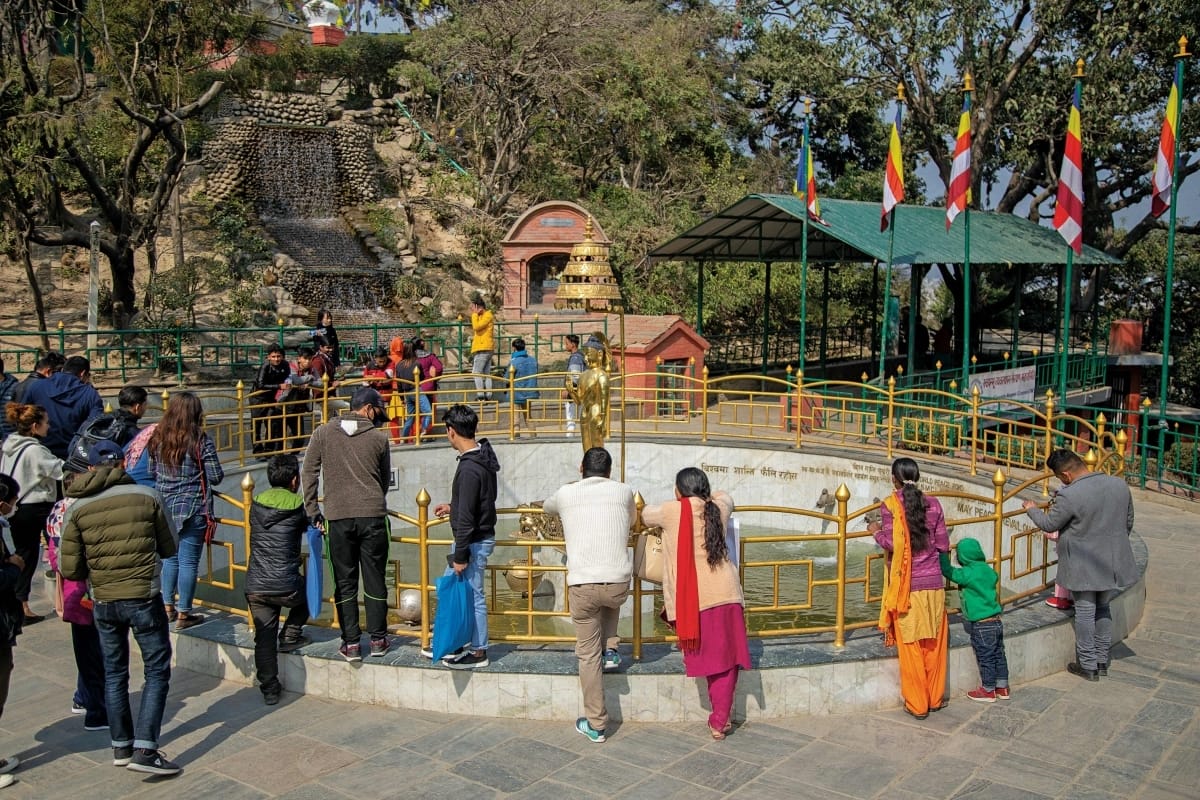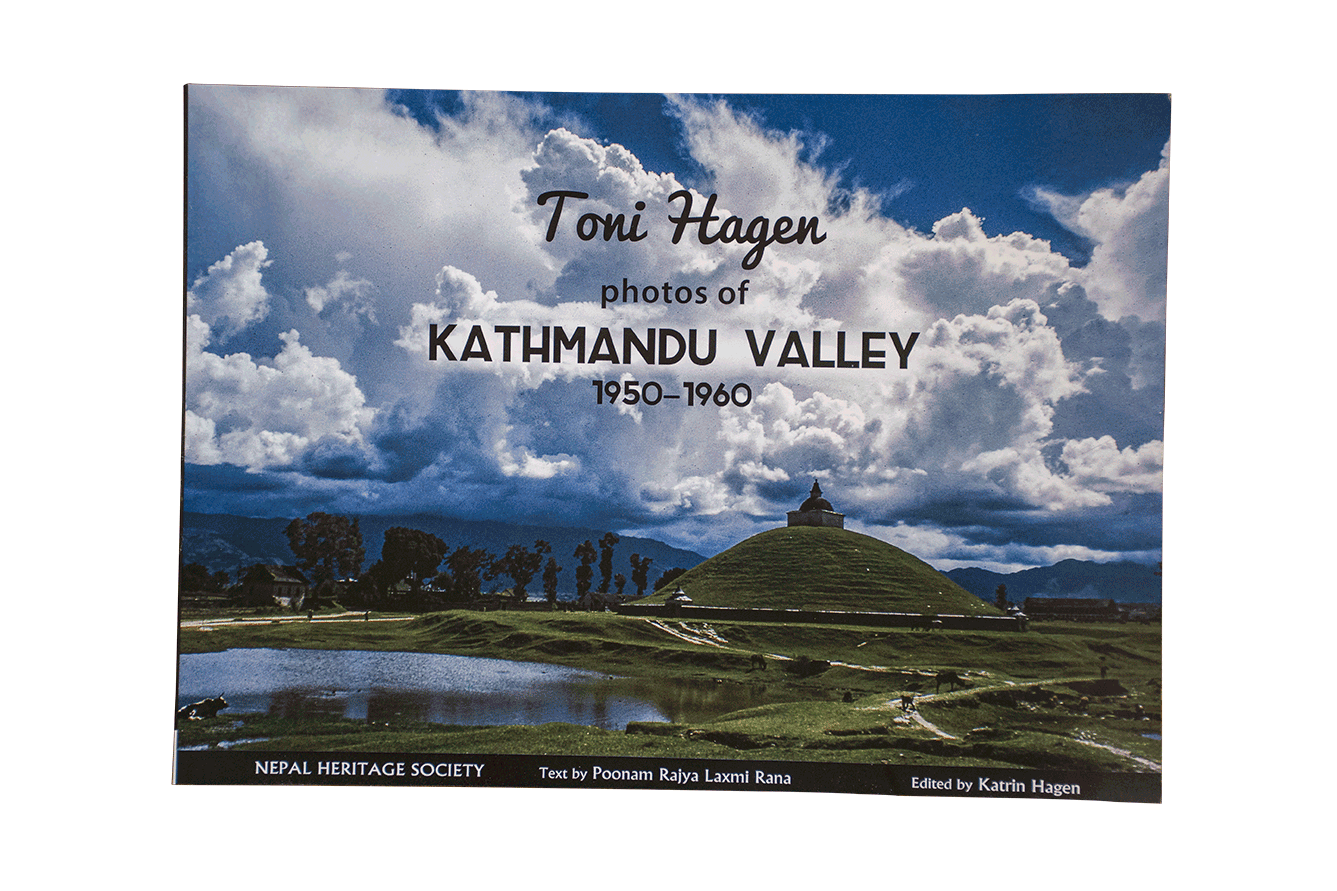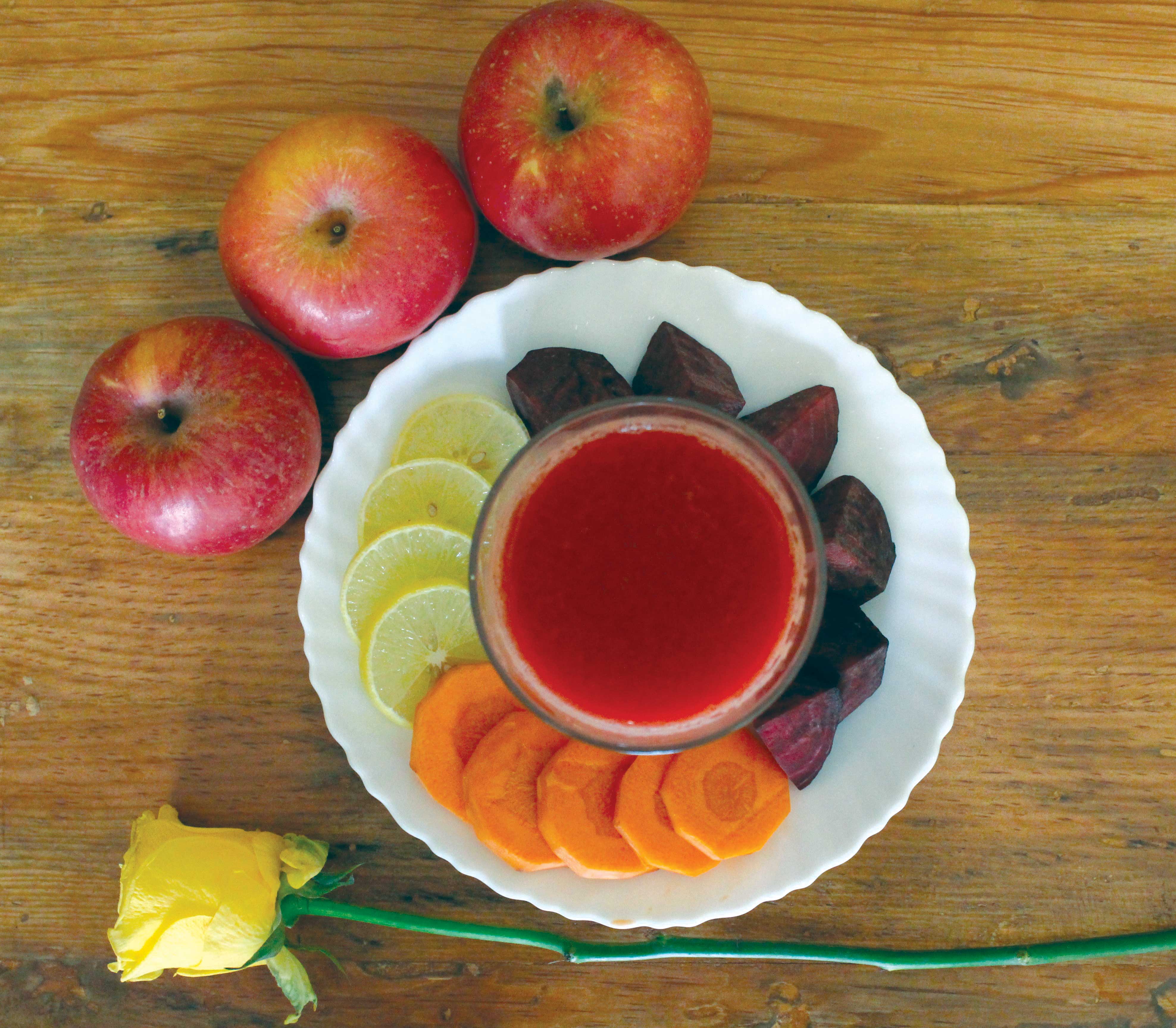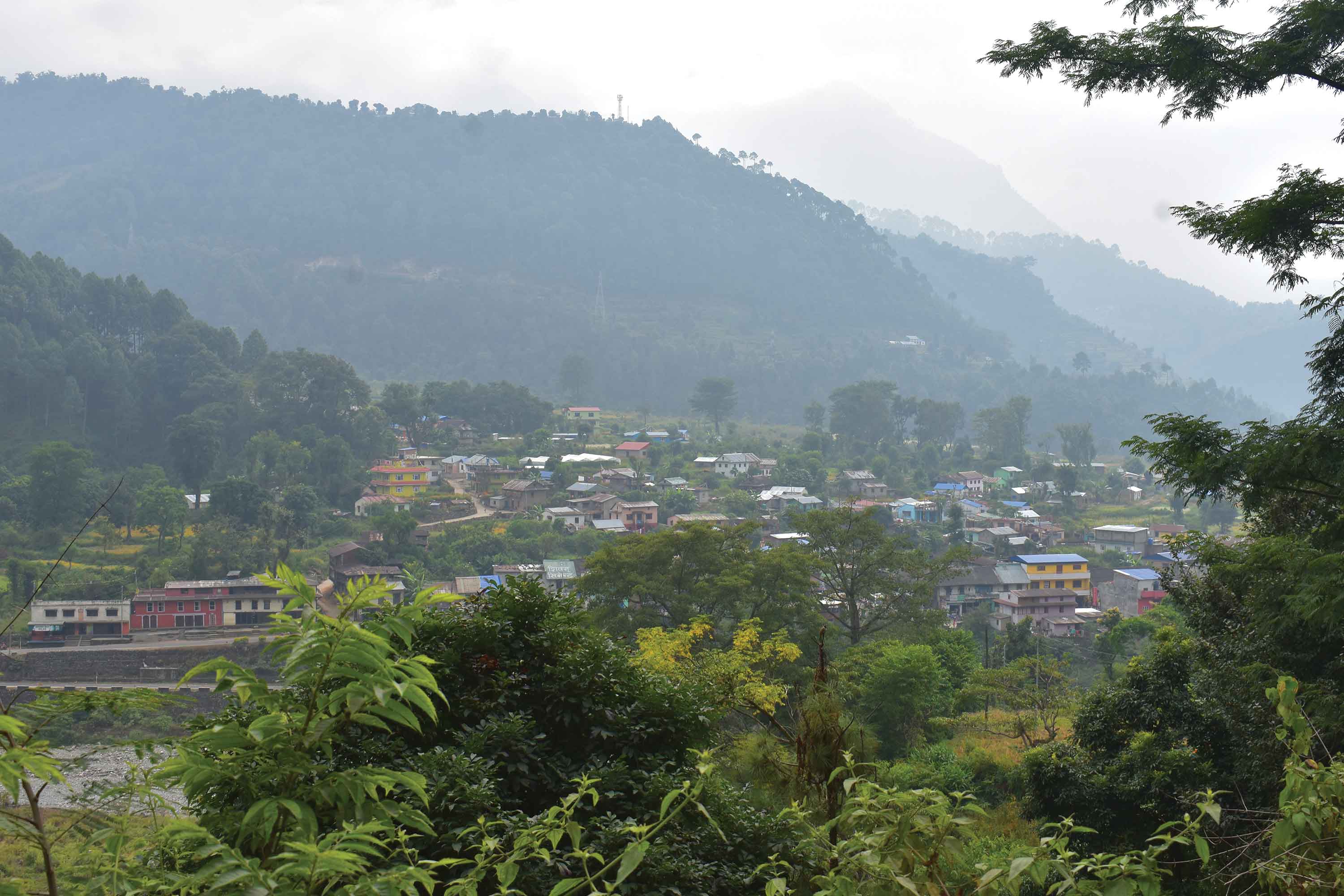Dolakha? Not a great distance; only 135 km or a five hour drive northeast of Kathmandu. Once out of the traffic congestion, the dust, and noxious fumes up to Jagate, Bhaktapur, the drive onward to Sanga, Banepa and then Dhulikhel gets effortless with much needed clean fresh air to breathe. After Dhulikhel the road winds downhill, and the north skyline stretches out with snow capped ranges; if weather permits of course. The foothills shortly merge into Panchkhal—a warm fertile valley. As you marvel at the red clay landscape of Panchkhal, only 10 kilometers down the road brings you to Dalalghat, which looks onto a beautiful confluence, the snowfed rivers Indrawati and Sunkoshi. It is worth stopping for a quick glance at the rivers, or perhaps to take a bite at a roadside eatery—a platter of fried river trout, perhaps. It’s the local delicacy.
The road climbs again after Dalalghat. As landscape zooms by, the river Sunkoshi keeps you company with tranquil pools and white water rapids as it drifts by the foothills on your right. Another confluence then appears at Balefi where the boisterous river Bhotekoshi tumbles into the Sunkoshi. As the drive progresses, a tiny settlement called Sukute slips by. After two hours Khadichaur appears, small but bustling. Stop for lunch at the Rajbhandari Hotel, or shop for Chinese goods in the market if you like. At Khadichaur, the Arniko Highway branches off. To the right and across the bridge over the Sunkoshi runs the Swiss-built Pasang Lhamu Highway (previously Lamosanghu-Jiri Road). This is the road to Dolakha, and Jiri is the last point.
HILL-COUNTRY
It is now hill country, all the way. The narrower road winds along in a maze of twists, turns, loops and hairpin corners. Dense wood, terraced fields and small Tamang settlements streak by. After villages like Sano Pakhar and Thulo Pakhar, pines stud the hills. The ascent eases at Mude at an elevation of 2,500 m. This place is known for savory potatoes. A tangible chill appears in the air. Within ten minutes Kharidhunga, the site of a magnesite quarry, appears. The vista changes now to a sub-alpine terrain. Snowfall occurs each winter at Mude and Kharidhunga. As the road descends, more causeways, miniscule waterfalls, sheer drops, ravines and breathtaking countryside intervene. The steep descent thereafter eases at a wooded gully where a picturesque waterfall cascades down under a bridge, then disappears into a deep ravine. This scenic spot is called Charange. The incline resumes again moving past sprawling terraced fields till an old village called Makaibari (‘Cornfield’) comes into view. If you do not know, Kumar Basnet, the celebrated Nepali folk singer, hails from this village. Fifteen minutes later you reach Charikot.
At almost 1800 m (5,900 ft) in elevation, Charikot as the district headquarters of Dolakha assumes the perfect picture of a burgeoning highway town. Tea houses, lodges, shops, and more shops line the road. The highway divides here. The main highway runs to Jiri while a side road bears east to Dolakha town, only 4 kilometers away. A 20 minute drive downhill takes you across sloping terraced fields and sparse habitation, bringing the paved road to its tail end. And Dolakha, or Abhayapur, the City without Fear, greets you.
‘Abhaya’, without fear and ‘pur’, a city: that’s how the annals of history showcase this quaint little town. Ancient myth has it that since Dolakha and its inhabitants enjoyed the blessings and patronage of God Bhimsen, the mythical hero of the Mahabharat, it was christened Abhayapur—the City without Fear. There are many ideas how and why Abhayapur was renamed Dolakha. By one account, the word dolakha is believed to have come from the Tibetan language. Do in Tibetan stands for a stone, la for a temple while kha implies a house, signifying a city with many stone temples and houses.
QUAINT TOWN
What really strikes one as strange upon arrival at Dolakha (at approximately 1,675m), is her unbelievable simplicity. Seemingly impervious to rapid urbanization (in contrast to Charikot), Dolakha impresses one as a quiet and unassuming little town. “Maybe it is a blessing in disguise”, some say, for a town that is a far cry from the bustle and haphazard colonization of nearby Charikot. Behind this modest façade, however, the entire Dolakha District (2,191 km2) being named after this small nondescript town, vouches for its past enigmatic era and a rich heritage.
As you stroll through the town, amidst newly built houses that line the lanes, you cannot but marvel at the sight of old stone mortar houses that seem to defy the present changing times. Some still bear thatched roofs while others have been re-topped with zinc-sheet roofing. The gnarled and weather beaten doors and windows of these houses bespeak of their remarkably old age. One such house owned by my uncle (my mother’s brother) at Chamsali Tole, has weathered more than 160 years. “It was built by my grandfather,” says my 76-year old uncle, Cheeni Bahadur. Once lived in by five brothers, their sons and daughters, granddad and granny, all together more than 17 members, it is now left to my uncle and aunty.
RELICS AND TEMPLES
As you saunter further along the stone-paved alleys temples cross your path at almost every bend. Well planned as a city during the Malla Era, in the 13th century, Dolakha earned its name as a city of temples. Bajrayogini, Harisidhi, Narayan, Pashupatinath, Manjushree, Rato (Red) Machindranath, Taleju Bhawani (Rajkuleswor) and many other temples enhance Dolakha’s image, matching that of Kathmandu as a repository of Hindu shrines. Domed stupas and chaityas (chortens) also make their presence felt as you explore farther. “According to folklore these stupas date back almost 600 to 700 years and are said to have been founded by the Malla rulers,” one local elderly man told me. The presence of these Buddhist relics in Dolakha reflects the co-existence of diverse religious customs and beliefs in the olden times. Temples or stupas, you will note that some of them are in very bad shape and need to be renovated.
Steeped in age-old traditions, the little Dolakha is also marked by many festivals. During the most celebrated of them, called Mahani (Dashain), Dolakha dons a vibrant appearance with the legendary Khadga Jatra(Sword Festival). The town buzzes with festivity from dawn to dusk at this time with kith and kin streaming in from Kathmandu and other cities to enjoy happy reunions with their families.
HISTORY, CULTURE AND MYTHS
As your tour progresses you hear bells toll in the distance. The sound comes from the Bhimeswor temple, the most venerated shrine of the little town, believed to have been built in the 7th century AD. The Bhimeswor temple is situated on an elevated ground northeast of the town. Characterized by a unique roofless architecture, the temple houses the Bhimeswor not in the form of a robust idol but simply as a stone effigy resembling a lingam. Entwined by a gilded metal snake, the sacred black stone carries a small nick at the top. Endowed with three avatars (incarnations)—Bhagwati, Shiva and the mythological hero Bhimsen of Mahabharat fame, the puja rites are performed accordingly to appease the triumvirate deity. The legendary Bhimsen is also consecrated as the god of trade and commerce by business communities. The stone effigy of Bhimeswor is known to go into enigmatic sweating spells which presages some kind of national crisis or disaster. The idol is said to have sweated profusely preceding the colossal earthquake of 1934 AD, the independence from Rana rule of 1950, the demise of Panchayat government in 1990, the Royal carnage of June 1, 2001 at the Naryanhity palace, to cite a few. Favored as a holy pilgrimage, devotees who include Indians have been visiting this temple since time immemorial. The visits intensified after the Lamosanghu-Jiri Road (Pasang Lhamu Highway) was built. Fridays, Saturdays and Tuesdays see the town swarming with devout Kathmanduites. Although buses ply between the town and Kathmandu, it’s no surprise to see bands of young people from the metro arriving into the little town on their motorbikes on weekends.
Another noted shrine closely associated with the history of Dolakha is the Tripura Sundari temple. Located some 185 m downhill the Bhimeswor temple, this shrine draws profound reverence as Goddess Bhagwati. The idol of Tripura Sundari is housed inside an old building called Devikot (Dekwar in Dolakha dialect). Barred from viewing by visitors, only the main priest is entitled to perform puja on behalf of the devotees. Believed to have been built before the Mahabharat era, this shrine is shrouded in mystery and occult beliefs. “For a long time people feared to visit this temple area after sundown,” says Shyam, a member of the temple guthi (trust). “In old times, those who mistakenly wandered off to the temple surroundings after sunset went missing; obviously they were devoured by the satanic spirits that lurked around,” revealed a somber looking Shyam.
As a district, Dolakha adjoins Solukhumbu and Ramechap in the east, Ramechap and Sindhupalchok in the south, Sindhupalchok in the west and Tibet in the north. History reveals that Dolakha served as an independent state and saw the rule of the Kirants, the Lichhavis and the Mallas before the unification of Nepal brought in by King Prithivi Narayan Shah. Once a thriving city and a trade route to Tibet till the end of Malla era, historians believe that in 1534 AD King Jaya Indra Singh of Dolakha initiated the first ever silver coins of Nepal to facilitate trade with Tibet. They also claim that the first coins of Kantipur (Kathmandu) came later in the reign of King Mahendra Malla subsequent to the death of Jaya Indra Singh. This historic house which served as the ancient taksar (mint) still exists at a place called Dandathok.
Home to a rich culture and tradition Dolakha town is predominantly a Newar settlement. The Newari dialect from Dolakha is, however, different from that of Kathmandu. Nonetheless, both languages have some words with identical meanings, like ja (rice), baji (beaten rice), chhi (you), khan (talk), and Mahani (the Dashain festival) to name a few. Like their peers in Kathmandu, the Newars from Dolakha are represented by Shresthas, Pradhans, Joshis, Maskeys and Rajbhandaris. Going by the Puranas (ancient scripture), the Dolakha language saw its birth during the Mahabharat era when the Panch Pandavas, sentenced to one year in exile, went into hiding in Dolakha. To keep themselves incognito, the five Pandava brothers devised this unique dialect. Another school of thought believes, however, that the Dolakha language has its roots in Kathmandu Newari and was introduced by itinerant traders and government workers assigned to the district during their long sojourns in this town. With adaptations made from this migrant Newari from Kantipur (Kathmandu), the Dolakha people evolved their own independent language to suit local customs and environment. The Dolakha language, however, also embraces some expressions from other ethnic community like the Thamis, the Sherpas and the Tamangs. Amazing as it may sound, even the Bengali word ‘taka’ meaning currency is used in the Dolakha dialect, with the same meaning.
CLOSE KNIT FAMILY
It is little surprise if you observe everyone in Dolakha town greets each other with a bow and a word of syaudai (respect). The residents of Dolakha literally appear to have family ties by ancient descent as the lineage comes from either the father or the mother. In olden times, marriages in Dolkaha town were confined to the four walls of the city. With the coming of roads and better communication, the migrating trend to cities boomed amongst the subsequent generation. This brought in its wake a spread in marriage practices sweeping far and wide with kinship ties to Kathmandu topping the list.
Looking like a hill resort, the Dolakha town hugs a wooded hillside that gradually descends to the foothills of towering mountains as the river Tama Koshi river cuts its way across. The view of the river and the gorge is stunning. So is the north-east skyline as your eyes lock with the breathtaking expanse of snow encrusted Himalayan range while the mighty Mount Gauri Shankar towers under a blue canopy. The twin peaks synonymous with Lord Shiva and his consort Parvati is flanked by Melungste Himal as the Rolwaling range undulates over the horizon.
SMALL TOWN BIG ATTRACTIONS
If you can stretch your itinerary by a week, short hikes or treks from Dolakha town are for the taking. A six to eight hours hike to an ancient pilgrimage site called Kalinchok Bhagwati is a dream destination that takes you through lush temperate to sub-alpine forests, unforgettable Sherpa settlements, past sheer cliffs, up to high pastures at 3836 meters. The snowy peaks keep you company all the way. Another destination, a Sherpa village called Beding often referred to as the land of Everest summiteers, is three to four day trek, leading into the picturesque Rolwaling valley. With the mighty Gauri Shankar peering down at you, this valley is also celebrated as one of seven hidden Himalayan valleys of Nepal.
Only an 18 km hike southeast of Charikot offers another pilgrimage site called the Salilungeswor Mahadev at an elevation of 3,500 m. Distinguished by a myriad of hills that roll by the hundred, this site affords on a clear day the view of Kathmandu valley and the Tarai plains. Jiri, a town often compared with Zurich in Switzerland, is only 55 km of paved road away. Before the construction of an airstrip at Lukla, Jiri served as a gateway to Namche and the Khumbu, and often bustled with summiteers on the trek east to Everest. If your interest lies in monasteries, a village called Bigu, only a 2 day trek away, will interest you with its seminary for Buddhist nuns (aanis). Or maybe your interest lies in some serious trekking and you would like to attempt the trail to Tsho Rolpa, Nepal biggest glacier (at 4,581 m.), which was once under threat of bursting. You will, however, need professional help and specific gear for this is a little arduous trek. For a modest accommodation, Dolakha has a number of lodges located near the bus station.
Stunning landscapes, unspoiled country sides, verdant valleys, meandering rivers, primeval forests, dramatic gorges, towering mountains, craggy heights, incredible Himalayan ranges and the opportunity to observe the ancient culture, tradition and religion of a historical town and its people—that about sums up the tour of Dolakha.
Ravi Man Singh is a freelance writer with families ties to Dolakha. He can be contacted at ravimansingh@hotmail.com.










